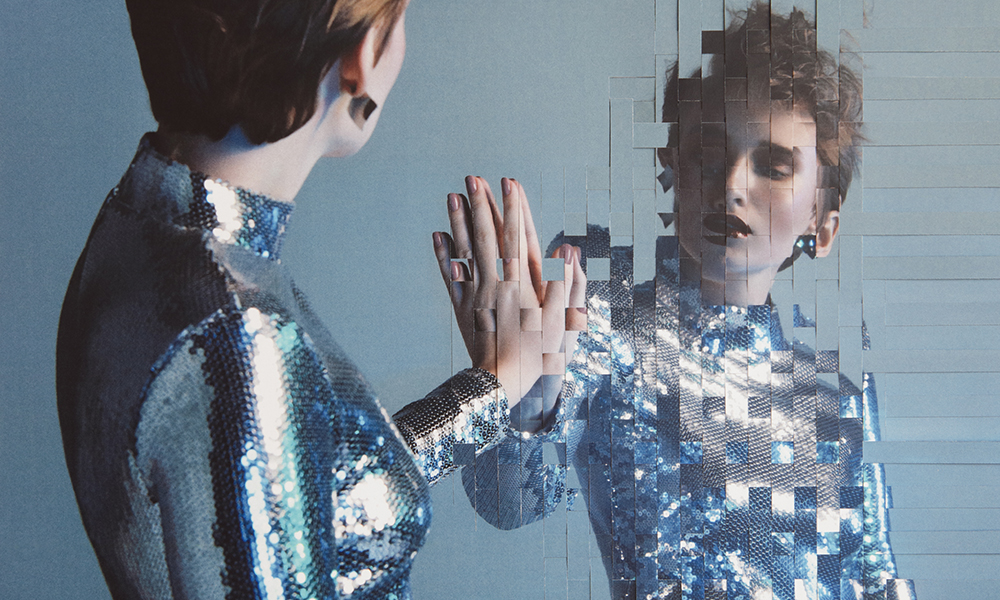Fashion is celebrated above all for its versatility – its ability to adapt to every era and to change with the times. Right now we are living the intangibles revolution: social media, online shopping, on screen greetings, audio messages and meetings via platforms. Now it is the turn of fashion. That is, fashion you can buy but not touch.
When my grandmother wanted a new dress, she used to buy the material and take it to a dressmaker. My mother went one step further and would visit a store, and after trying on several garments, she would buy the one that suited her best and take it home. Nowadays, our generation shops online and the purchase is delivered to our home. Our children however, – digital natives – will no longer see the need for this final step.
They will simply get a file sent to their phone, enabling them to download the item for use in the metaverse, i.e. the virtual world. So, when their digital self attends an online class or chats on social media, they can choose which t-shirt to wear from the items stored in their digital wardrobe.
At this point, you may well be thinking that we’re writing fiction, but the truth is that intangible fashion has arrived and it’s here to stay. Nike’s CryptoKicks sneakers come with a digital asset, attached to a unique identifier so that the digital version of the shoe can also be sold. Nike has now obtained a US patent to this end.

Similarly, Dolce & Gabbana have auctioned purely digital creations, through their impressive Collezione Genesi NFT, with for example, the Impossible tiara or the Mosaic jacket, which has achieved sales of over €250,000.
The auction of NFT (non-fungible tokens), which we addressed in this post, comprising wearable works of digital art, has revolutionized the trademark industry. Just as online fashion revolutionized the market, digital fashion – fashion you can’t touch –is set to do the same.
Think for example of influencers. What’s the point of giving brand ambassadors the material product, if by simply sending them an online file, they can wear the jacket promoting the brand in their Instagram stories, just as if they were physically wearing the garment?
Also, think about those items that luxury brands bring out jointly with other firms that are practically works of art. What could be simpler than having a virtual library where these items can be stored and simply shared through a link?
How to protect virtual creations
The question that arises is how to protect these virtual creations. From a technical perspective, blockchain technology may be the answer, since it would ensure downloading and traceability of the product, which could even be exchanged (think about the sale of second-hand digital articles). Depending on the price paid for the file, its reproduction could be unlimited or subject to conditions.
As far as legal aspects are concerned, the Intellectual Property Law could be of help here. Article 10 states that “intellectual property shall comprise all original artistic creations expressed on any medium or in any format, tangible or intangible, known at present or that may be invented in the future”. Consequently, the law envisages that a work can be expressed in an intangible medium, i.e., that it cannot actually be touched.
This would be a far more sustainable type of fashion as it would no longer accumulate textile waste, and consumers could choose whether they actually wanted to wear something in the real world, or simply show it off in the digital sphere.
Needless to say, legislation on trademarks, designs and also unfair competition, protect these products. For example, the Trademarks Law expressly provides that third party use of an earlier mark on “electronic communication networks”, constitutes infringement.
Image rights of avatars
And why not go even further. We believe that the day will come when we will not only have to consider whether or not to connect our camera for a video conference, but also decide if our avatar should attend the meeting instead, dressed appropriately in the clothing we have chosen specially for the occasion – just as we now choose the screen background for our video conferences.
But here too, the legal protection of avatars can spark controversy. In order to create a hyperrealistic avatar you need to capture the person’s image with numerous cameras and scanners, all from different angles, in order to flawlessly recreate their features, movements and facial expressions, so that the real image coincides as far as possible with the virtual one.
In this case, the protection of image rights and their exploitation presents a huge challenge. It will lead to complex contracts stipulating exactly what the avatar can do, for how long, in what way, and, with respect to what concerns us here, the clothes that it will be wearing. Indeed, we need to bear in mind that if the avatar’s image is recognizable as that of an actual person, we will need their authorization to use the avatar.
In short, the children’s story The Emperor’s New Clothes is increasingly approaching real life, since we now have fashion that cannot be touched but can be seen by all those who believe in it, and who are willing to wear it, or simply save it and display it on their phones.
Isabel Pascual de Quinto Santos-Suárez
Industrial Property Department






